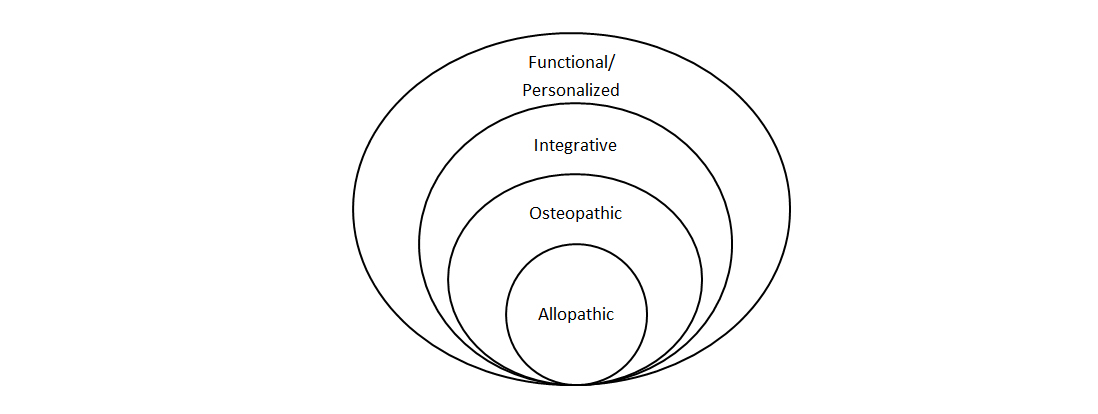A New Era Begins
The rallying cry is, “Let’s change healthcare!” From all corners of the medical universe, there is agreement that change is necessary. The biggest questions are, “What is the change?” and, “Who will make it happen?”
Lost your password? Please enter your email address. You will receive a link to create a new password.

The rallying cry is, “Let’s change healthcare!” From all corners of the medical universe, there is agreement that change is necessary. The biggest questions are, “What is the change?” and, “Who will make it happen?”

Once upon a time I was engaged. I was 21 years old and more in love than I had ever been, and perhaps more than I have even to this day as I sit here writing this at 6 am on a calm Summer morning. I lived with my fiancé and her children. Although life was a bit nutty at times. We had something. Something good. For a moment there, it was permanent…

In July, I had the opportunity to deliver a webinar for MedFit Network on data analytics and population health for the medical fitness profession. I believe the MFN is spot on in their interest in data, and here’s why….

I hope to give you some insights to both how the human body works as well as why medically-based fitness is not only valid, but absolutely necessary to reverse, assist, or prevent various chronic and acute disease conditions. Wow, that is a “mouthful” to say the least. I feel so strongly about this perspective that I hope to create the Adaptive Health Model as a major “brand” of fitness. My company (Principle-Centered Health) for the past couple of decades has always had a systems-based approach to health and fitness. This approach ties a lot of different facts into a common theme, usually called a theory in science. Even my dissertation looked at how people adapted to the physical, mental and social issues in their lives using exercise, self-efficacy, and social support, respectively, and levels of strain and burnout. How humans adapt to the stresses put on them is very specific and can go in good or bad directions.

Like most theories, paradigms or what people consider “original thought”, this “adaptive” paradigm builds on the “regenerative medicine” framework, and some disease models; thus, is not original at all. What may be new, or unique about the adaptive perspective is taking the old phrase from physicist Isaac Newton and his third law of motion, “for every action there is an equal and opposite reaction.” The body will respond to stresses by reacting in a “defensive” manner. If we break something down, the body builds it up (opposite reaction). If we are too low or too high in some function, the body will try to correct this. This negative feedback loop controls most systems in our bodies. I have often described our bodies as fragile but resilient. It is our fragility that signals the resilience to kick into gear!
Luckily for us, fitness is based on this exact principle. If we do endurance training, we are going into a lower oxygen state and there are many mechanisms or functions that kick in (sympathetic nervous system) when we push or stress our bodies. The body is responding to what is known as an “acute insult” by increasing the ability to transport and use oxygen, so that this “insult” doesn’t hurt us next time. The same “specificity of training principle” occurs with resistance training. We breakdown muscle and the body builds it back stronger to tolerate that “insult” the next time. When multiple acute exercise stresses are added up, the body changes and we call this “training”.
If stresses are really high, either too intense, too long, or too often, the body gets injured due to this overload, or it needs a lot more time to heal back up. This is why overload needs to be done gradually and progressively. Even our brains use this idea as a guiding principle. We push our mental capacities to learn more, but if we stress it too much, it will repress memories or shut down (burnout).
This same principle applies when we give our body bad things, or a lack of good things, it adapts with a dysfunctional state or disease state. Chronic inflammatory diseases, diabetes, metabolic syndrome, coronary artery disease, emphysema and heart disease are just a few of the examples of how the “garbage in and garbage out”, or “use it or lose it” works. If we sit and work at the computer too much we develop dysfunctional postures and upper cross syndrome may develop. If we do not constantly stress some system, it reverses the training changes, and goes into the “default” state, which is untrained and unable to respond to daily stresses. We simply need to obey our bodily blueprints, we need to constantly use our bodies to maintain function, and overload it to improve function. We need to have the right nutrients in place to allow this to happen, and then basically – get out of the way!
The perspective being proposed in this article shares much with the more holistic medical practices. The human body is really good at healing itself when is it given the right factors to do so, and when we “get out of the way” for it to do so. I know many people who strongly believe in using alkaline water to “cure their ills”. They believe that the body does not know how to regulate itself with its own pH. Most of these same people don’t know what pH even stands for! They don’t know that it is actually the inverse log of the hydrogen ion concentration relative to the hydroxide ions, and that the respiratory system and renal system will go into action as soon as blood pH goes 0.05 pH units high or low!
In other words, these people believe their own bodies are naïve or incapable of curing itself, and like a young child or baby, their body needs constant care and guidance. Most people are so stressed about “taking care” of their bodies that they are doing more harm than good via the stress hormones, especially cortisol being constantly secreted and their adrenal gland is getting fatigued. In reality, the body is really good at healing itself, when we keep it strong and in good operating condition (via exercise and movement) and when we give it the right components to do the healing (via nutrition), and we get out of the way of the immune system (by managing our daily stress levels).
The mind works very much like a muscle. It must be trained and kept strong and when injured it will react in dysfunctional ways, and fight to protect itself. I recently heard an expert in human behavior change speak on how to keep a resolution. He said, we can’t keep a resolution without changing the underlying behaviors which caused the bad habit or lack of a good habit in the first place. By changing the way we think, we change the way we act, and changing our actions will change the way we think!
The quote often stated by Thomas Edison in 1903, which was to give rise to the HMO concept, “The doctor of the future will give no medicine, but will interest his patient in the care of the human frame, in diet and in the cause and prevention of disease.” Medical doctors (M.D.s) upon completing medical school and prior to practicing take the Hippocratic Oath, which is to do no harm. Even back in Ancient Rome, Hippocrates understood the importance of individualized medicine and the power to “get out of the way” (#5) and give the body what it needs to take care of itself. He had five rules that are still relevant in today’s medical practices.
A philosophy of practice using these practices is integrative medicine. A brand of medicine created or at least popularized by Andrew Weil. The University of Arizona has this “brand” of medical school. Again, the academic requirements are similar to the M.D. and D.O. but expands its scope to other areas. From the website, Integrative Medicine (IM) is defined as a “healing-oriented medicine that takes account of the whole person, including all aspects of lifestyle. It emphasizes the therapeutic relationship between practitioner and patient, is informed by evidence, and makes use of all appropriate therapies. many different ways in the patient.
A new type of medicine is emerging from this functional perspective which is called personalized medicine. Again, the two are basically two sides of the same coin.

Figure 1: A diagram above showing the greater scope of each medical perspective- Integrative and Functional medicines are close in their holistic perspectives, with differing points of emphasis
Sometimes disease hits simply because we were genetically predisposed to get it. However, very often if our system is strong and in good operating condition, we resist it from every occurring or overcome it quite quickly. Cancer is a prime example of this. We all have cancers in our bodies all the time. It is the strong immune system that fights it off. This is amongst the reasons that many, many chronic diseases hit us when we are old. The various system have lost their capacity to fight the dysfunction off, or recover from its destruction. Soon cell death (necrosis or apoptosis) or neoplastic (cancer) growth kicks in.

Many, many chronic conditions that the MedFit Network and MedFit Classroom address are helped by exercise and diet because the ability of body to adapt and regenerate itself is enhanced. Most systems in our body fall under the “use it or lose it” scenario. High sugar, alcohol, smoking, and lack of movement are culprits in our health. Our body is not designed for an overload of these factors and across time, many different symptoms will develop because our body can no longer compensate or regenerate.
It is important for the medical fitness professional to understand the power of exercise and nutrition, and the proper application of these tools given the client’s or patient’s current condition. The field of physical therapy developed because many musculoskeletal conditions are helped by movement therapy or exercise. Many chiropractors believe that proper spinal alignment delivers proper neural signals throughout the body, which allows the body to optimize its regenerative capacity. Thus, an expert in medical uses of exercise to combat disease is critical to a healthcare team.
Dr. Mark Kelly Ph.D., CSCS, FAS, CPT has been actively involved in the fitness industry spanning 30 years as a teacher of exercise physiology at academic institutions such as California State University, Fullerton, Louisiana State University, Health Science Center, Tulane University and Biola. He was an exercise physiologist for the American Council on Exercise, a corporate wellness director, boot camp company owner and master fitness trainer.
References
Center for Integrative Medicine, Univ. of Arizona (n.d.). What is IM/IH? Retrieved from: https://integrativemedicine.arizona.edu/about/definition.html
Science Daily (n.d.). Personalized medicine. Retrieved from: https://www.sciencedaily.com/terms/personalized_medicine.htm
Good Reads (n.d.). Retreived from: https://www.goodreads.com/quotes/13639-the-doctor-of-the-future-will-give-no-medication-but
Kalish, N. (2018). Hippocrates’ Diet and Health Rules Everyone Should Follow. Reader’s Digest. Retrieved from: https://www.rd.com/health/wellness/hippocrates-diet/